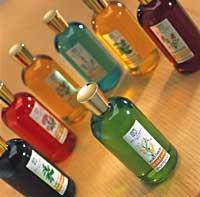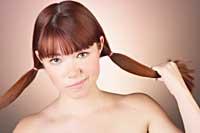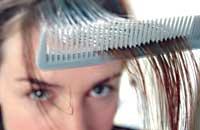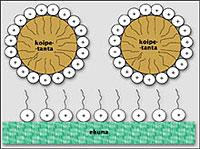Do not live without shampoo
2004/10/24 Rementeria Argote, Nagore - Elhuyar Zientziaren Komunikazioa

Billions of euros are spent every year on hair repair products. Previously, household items were used according to needs: traditional soap for hair washing, brushing and flashing of vinegar, hazelnut water of the head, etc.
However, there is currently a wide variety on the market. There are special products for all kinds of needs: dyes to cover the blue hair, foams to give volume, lacquers to maintain the hairstyle, creams to facilitate ironing... Faced with this possibility in the shelf of the store, the most difficult thing is to find the most suitable product. The saying also says: the option of the option, at the wrong end.
In addition, it is curious, but the human being tends not to want. The curl wants a smooth hair, blondes are reddish, the dream of stretching to who has the short and the long has the healthy appearance of freshly cut hair. And in this revolt, hair cosmetics houses are increasingly launching new products to the market.
Shampoo, necessary theme
They say that custom is needed and that today shampoo for hair washing is a necessary subject for daily grooming. According to custom, conditioner, hardener and other products can also be considered necessary, but the most basic thing about hair is shampoo.

The traditional soap was used to wash the hair. But the soap had more than one problem, among others, that removed the shine to the hair, since the soap covers the hair and loses the natural shine. In view of this, a special soap was needed for hair cleaning.
This special soap was a shampoo. The basic function of the shampoo is to remove the own fat from the hair, which is the one that adheres to dust and other substances that give it form of dirt. That need is not the current one, of course, and there are centuries when the first steps were taken to reach the current shampoo. The Egyptians, for example, used lemon water diluted with water and added aromatic herbs for hair to acquire a sweet aroma.
The word xanpu comes from the Hindu language. XIX. In the second half of the 20th century, shampoo was the massage that was produced on the head in the most refined hairdressers in England, while washing the hair, and not the product that was used to clean it. The basic formula of this product was the same in all hairdressers (water, soap and soda), but they kept secret the measure of these raw materials and the rest of ingredients that added them.
But the real revolution was brought by detergents into the shampoos world. Therefore, it is said that the forerunner of today's shampoos was produced in Germany in 1890, when the first shampoo with detergent instead of soap was made for the first time. But this merit is often recognized to Americans because they were the first to produce and use shampoo in large quantities.
Magic Formula

Over time the formula of shampoos has been adapted according to the pH of the skin of the head, the type of hair and, of course, the needs and demands of customers. In hair cosmetics a lot of money is invested, in short, research seeks the most suitable shampoo for each situation.
Shampoo, as a detergent, has surfactant components, also called surfactants. In the molecules of these components two parts are distinguished: one of them is able to bind to water (the so-called hydrophilic part) and another part is able to bind to fat (lipophilic part). These features allow the shampoo, once rubbed into the hair, remove the fat and rinse and carry it with it, leaving the hair clean.
However, surfactant components have an alkaline pH (higher than 7), while hair and headskin are slightly acidic (about 5.5-6). Therefore, the shampoo also contains an acidic component, often extracted from some fruit or plant.
But not all shampoos are the same, of course. And from the buyer's point of view, the essential elements that separate a shampoo from the rest are essential essences and fats. The buyer chooses the odor shampoo he likes, and those responsible for that characteristic odor are those essences and fats. But they are also nutrients for hair. Essences have always come from chamomile, mint grass or laundry, but today there are almost all kinds of smells.

Knowing that the role of shampoo is to degrease hair, it is surprising to know that the shampoo itself has fats. But the only fats in shampoos are not essential fats; to maintain the natural moisture of the hair are also used fats extracted from animals and plants such as lanolin and lecithin.
In addition to all these components, there are compounds that give final form to the shampoo, giving a certain thickness. And we cannot forget the hidden elements that are part of the formula and that each producer hides. This is not surprising, as hair cosmetic manufacturers spend a lot of money on research and shampoos are the result of long and costly processes.
Published in 7K.

Gai honi buruzko eduki gehiago
Elhuyarrek garatutako teknologia





